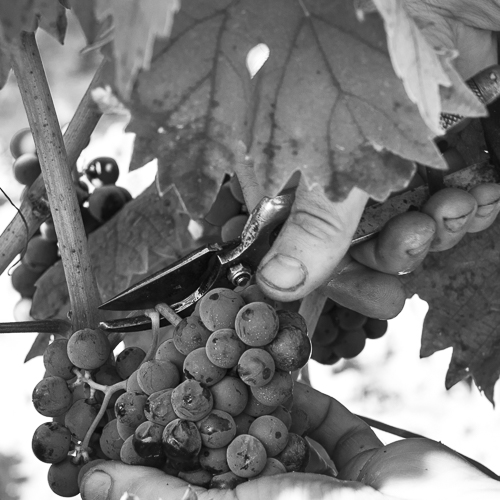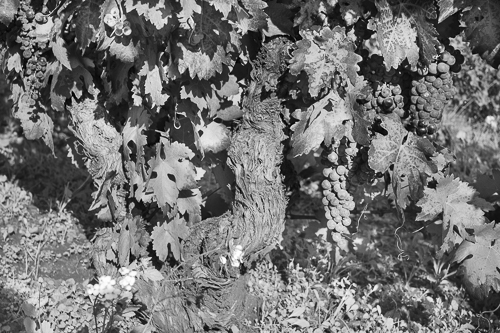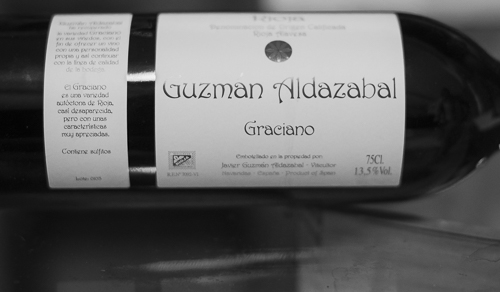Approaching the region of Rioja from Bilbao, we first noticed a layer of clouds covering a mountain range. Later we were told that this mountain chain, called Sierra de Cantabria, aids in creating the benign climate for growing vines in this area, protecting this region from the wet region of Biskaya next to the sea.
In fact, wine was produced in this area by the Phoenicians 3000 years ago, later the Romans made wine here, while in the 1850s French winemakers from Bordeaux established wineries in this region because their own vines were being ravaged by the Phylloxera epidemic. They also introduced innovative wine-growing know-how to the region.
World Wars One and Two together with the Spanish Civil War decimated the wine industry in Rioja and famine was widespread. Thus, the powers-that-be required that the area was turned into cultivation of wheat and it wasn’t until the 1960s that winemakers slowly replanted the fields with vines. Then, in 1970, the vintage was excellent and the wines of Rioja became famous.
We started our short wine itinerary at Villa Lucia on the outskirts of Laguardia in order to get a brief outline of the area and the wine production taking place here. Inside the main building we went to a cinema where we could watch a 3D film, introducing us to wine production in Rioja and the region in general.
Having watched the film, we went to the small town of Lanciego where we visited the Winery Cooperative Nuestra Señora del Campo. The cooperative was founded in 1952 and it has about 110 members, all of whom are wine farmers. They are mainly growing Garnacha and Tempranillo for making red wine and Viura for white wine. Almost all the wine they make is sold to the Marqués de Riscal winery. The remainder is sold in a shop where visitors can buy their “Rioja Alavesa” D.O.C. wines, called Anagorio, meaning the red one, and Vinlazco, meaning the white one.
During our visit, tractors with trailers full of grapes were passing Lanciego all the time, some of them going to the cooperative, while others were going to one of the many nearby wineries.
Before the grapes could be unloaded at the cooperative, each trailer was weighed and a probe was lowered into the grapes where some of them were lifted up and the juice was sampled in order to measure the sugar content of the grapes.
Afterwards, the trailers were brought to a hole-in-the-ground with an Archimedean screw at the base. Inclining the trailer, grape juice was flowing out due to the lowermost grapes being crushed by the grapes above. Then, a gate was opened, letting the grapes fall into the hole where the Archimedean screw slowly pushed the grapes into a chamber where leaves and branches would be removed. In fact, the Archimedean screw rotated so slowly that small avalanches occurred at irregular intervals as a number of grapes fell down simultaneously. Inside, there were tens of huge stainless steel tanks ready to be filled with must to be turned into wine during the slow process of fermentation.
Later, we went to the vineyards outside Lanciego where teams of workers were harvesting grapes manually. In fact, the workers cut the grapes with pliers and put them in a bucket. When it was full, they poured the contents into a container at the back of a tractor, which was placed among the rows of vines. When the container was full, a driver would drive the tractor to a trailer and empty the contents of the container into the trailer. Finally, when the trailer was full, it was brought to the cooperative.
The wine producers were, in general, very stressed due to the fact that they have to harvest the grapes manually, they are dependent on nice weather, it’s often raining in this area, and the grapes will easily be covered by mould in case of rain. In fact, one of them told my guide that there are three don’ts during the grape harvest:
don’t get ill.
don’t die.
don’t get married.
Telmo Rodriguez winery
Having visited the wine cooperative, we went to the Telmo Rodriguez winery.
Actually, this is a company which is difficult to find using “El Monte s/n” as address and having no sign at the crossroads where a gravel road leads to their winery. Besides, the buildings, made of adobe, are partly buried and the roofs are covered by native vegetation and there is no sign showing the name of the company outside.
The aim of this winery is to use native Spanish vines and restore abandoned or forgotten vineyards. Having established the winery just 6 years ago, they are cultivating vines in many parts of Spain.
As expressed on their web site: “The company’s work in Rioja is based on the search for the soul of the region, returning to the villages where a few special plots express themselves in a single wine”. Another quotation from their web site from the region of Valdeorras is also worth repeating; “After visiting several towns, especially “Las Ermitas”, they were greatly impressed, especially when they met a grower who still pruned his vines using an implement from the Middle Ages”.
They planned to start the harvest a couple of days after our visit, but a female clerk willingly set aside time to show us the premises and their vineyards nearby. Having just a superficial knowledge of vines, we just had to accept that their vines are old and native. Anyway, it was a pleasant experience going for a walk among their vineyards located in a slightly hilly terrain with plots surrounded by stone walls.
Bodegas Carlos San Pedro Pérez de Viñaspre
One evening, we went to a guided visit to Bodegas Carlos San Pedro Pérez de Viñaspre in Laguardia.
This is a company run by the San Pedro family, and their ancestors can be traced back 500 years, making wine manually.
Havng entered their shop on street level, one member of the San Pedro family led us downstairs to the wine cellars located below Laguardia, talked about how wine was made more or less manually at this company in the past, while now the production is mechanised. He also let us taste several of his company’s excellent wines.
The wine cellar had obviously been built by master stonemasons with lots of stone arches supporting the cellar. Originally, they were built to provide escape routes during times of war, but since the temperature and relative humidity are more or less constant, wine has been made in these cellars for more than 250 years.
Guzmán Aldazabal winery
This is a family-run winery cultivating the following grapes:
Graciano
Tempranillo
Their winery is located in the small village of Navaridas, while their vineyards are located a few kilometres away. Since we visited during harvesting, everyone was busy. Like at the Winery Cooperative of Nuestra Señora del Campo, workers were collecting grapes manually, supervised by the owner Javi Guzmán.
Going back to their house, we were shown around by Javi’s wife, Elvira. She’s in charge of their guest house Carpe Diem, which was built more than 250 years ago. It has been restored using local materials like stone, adobe, and wood. Their guests are invited to wine tastings, visits to vineyards, even do work like pruning, weeding, and harvesting.



